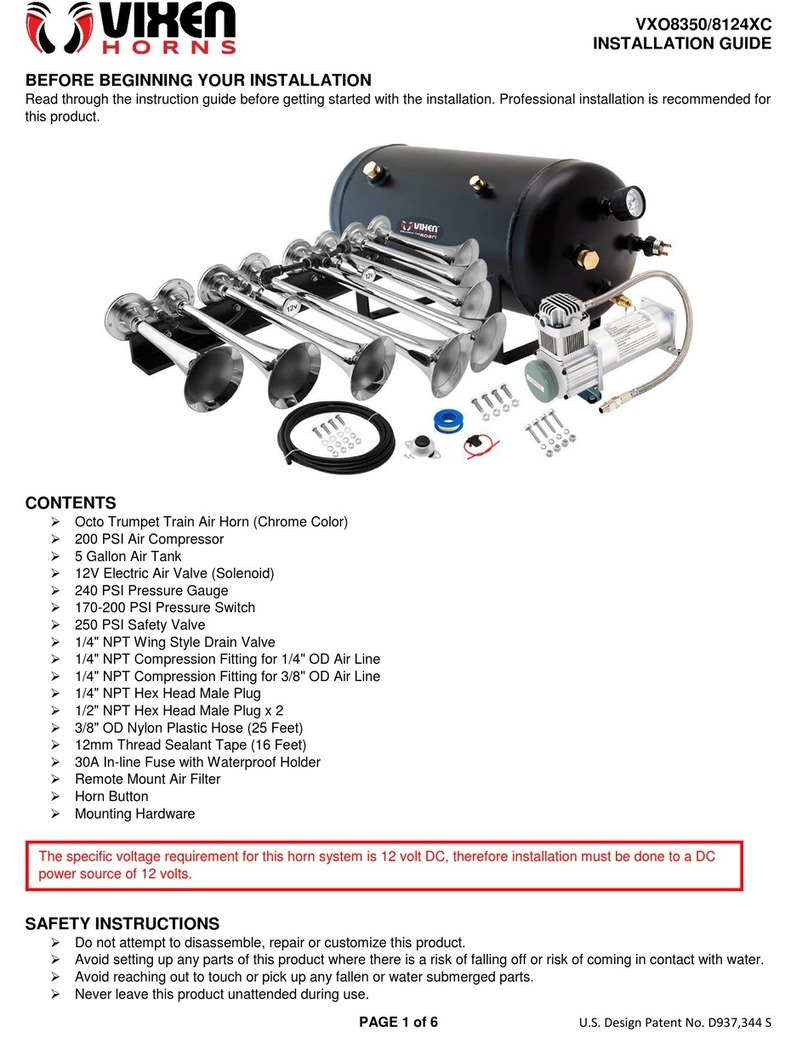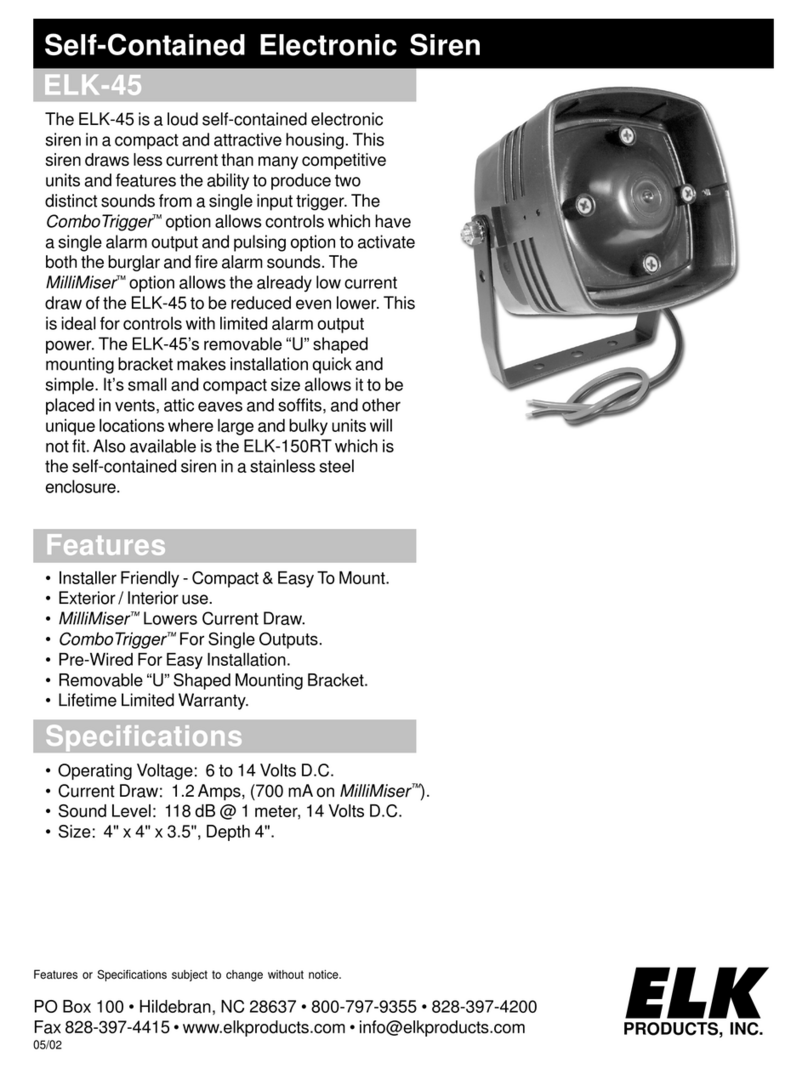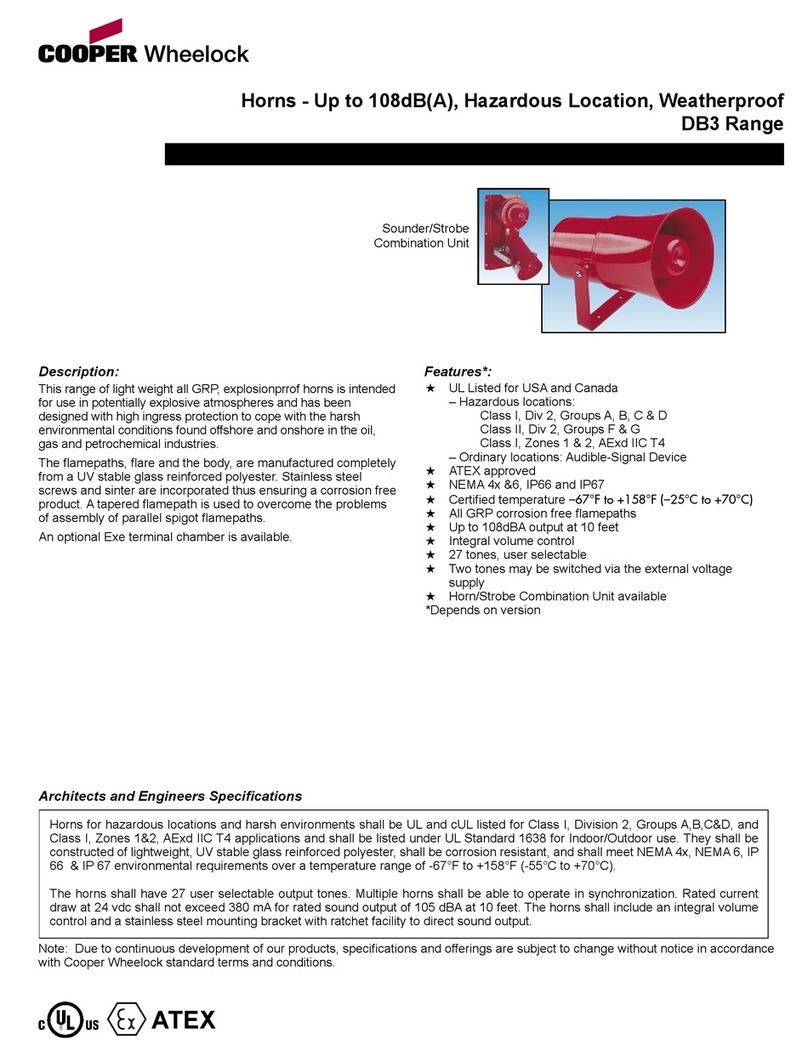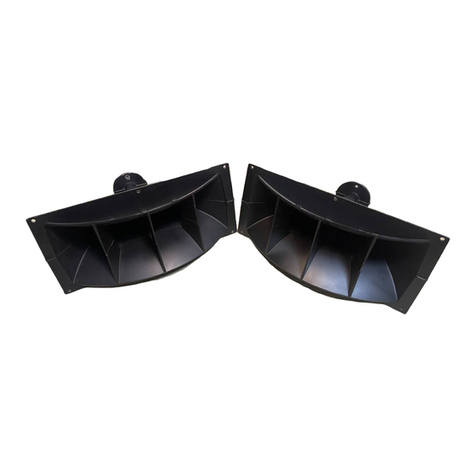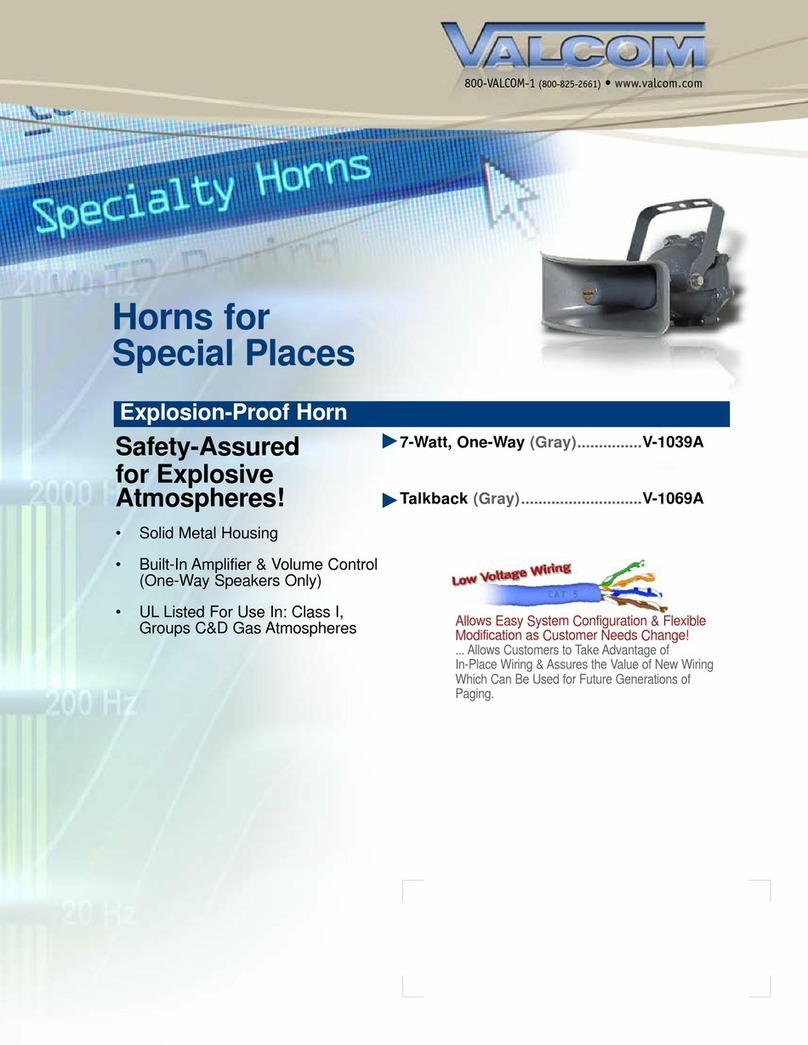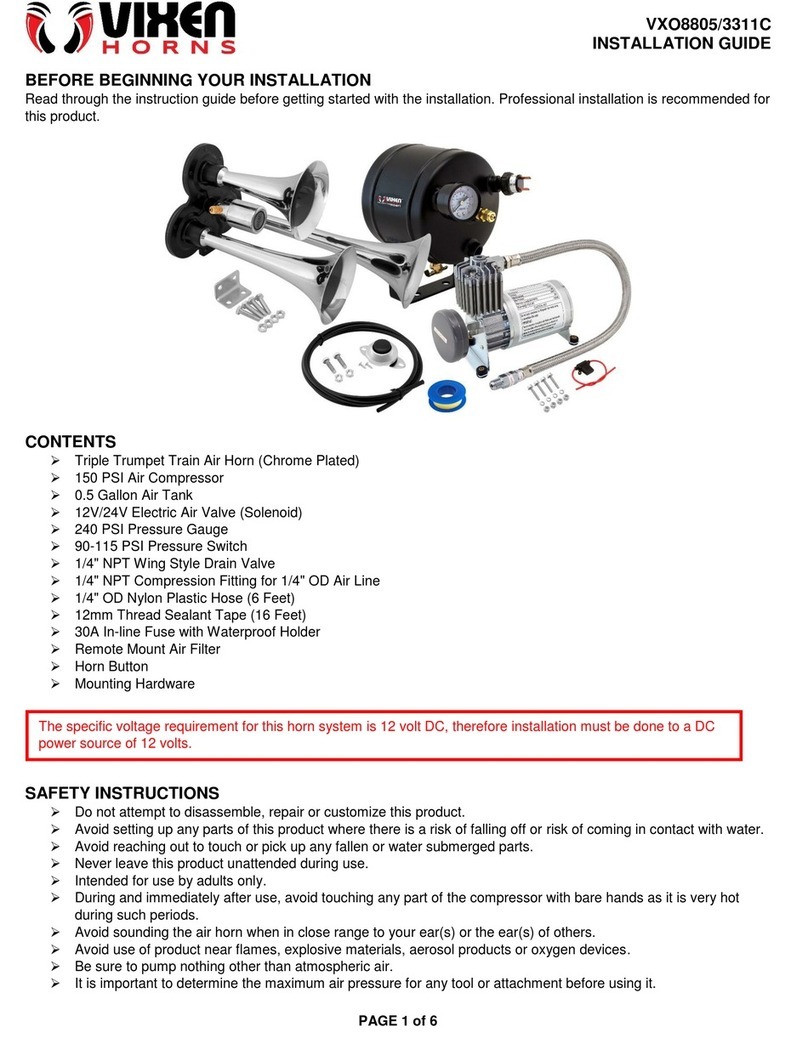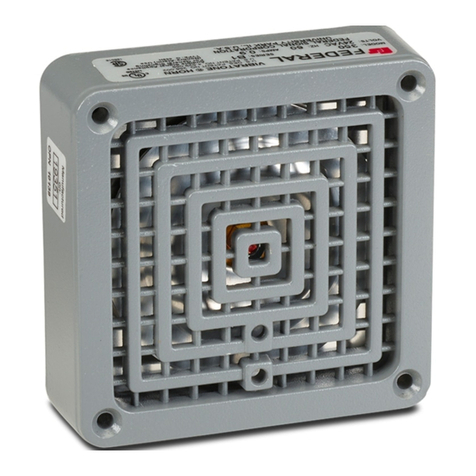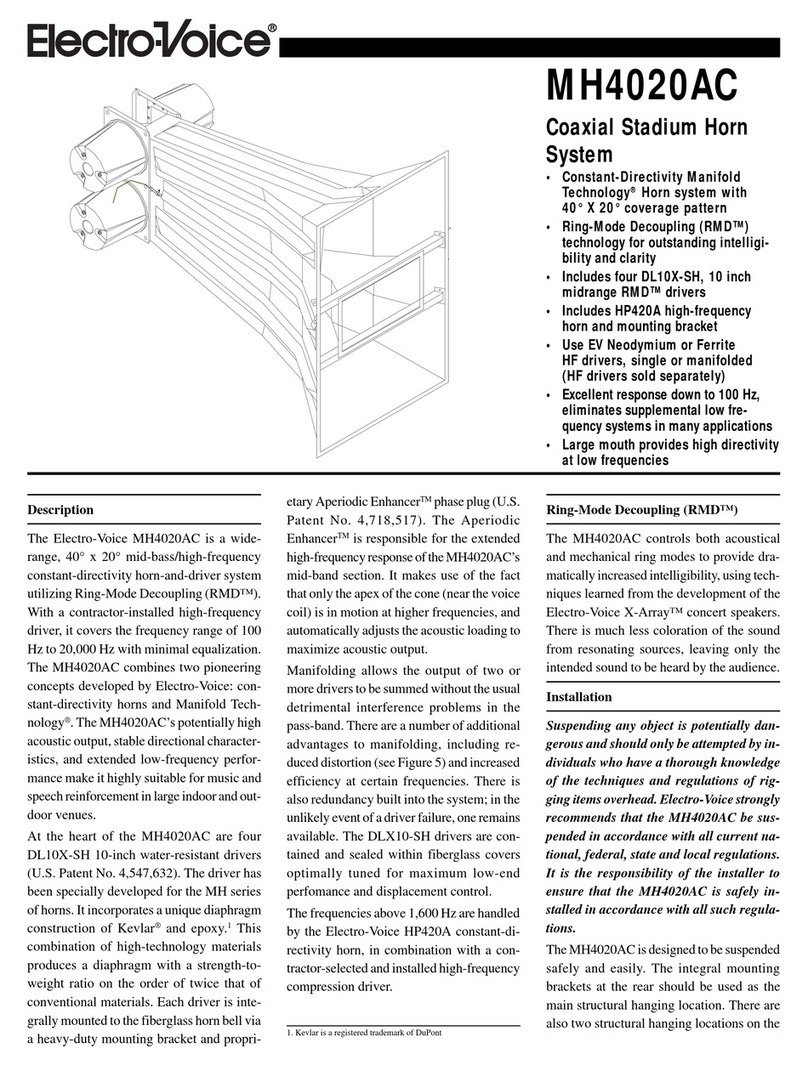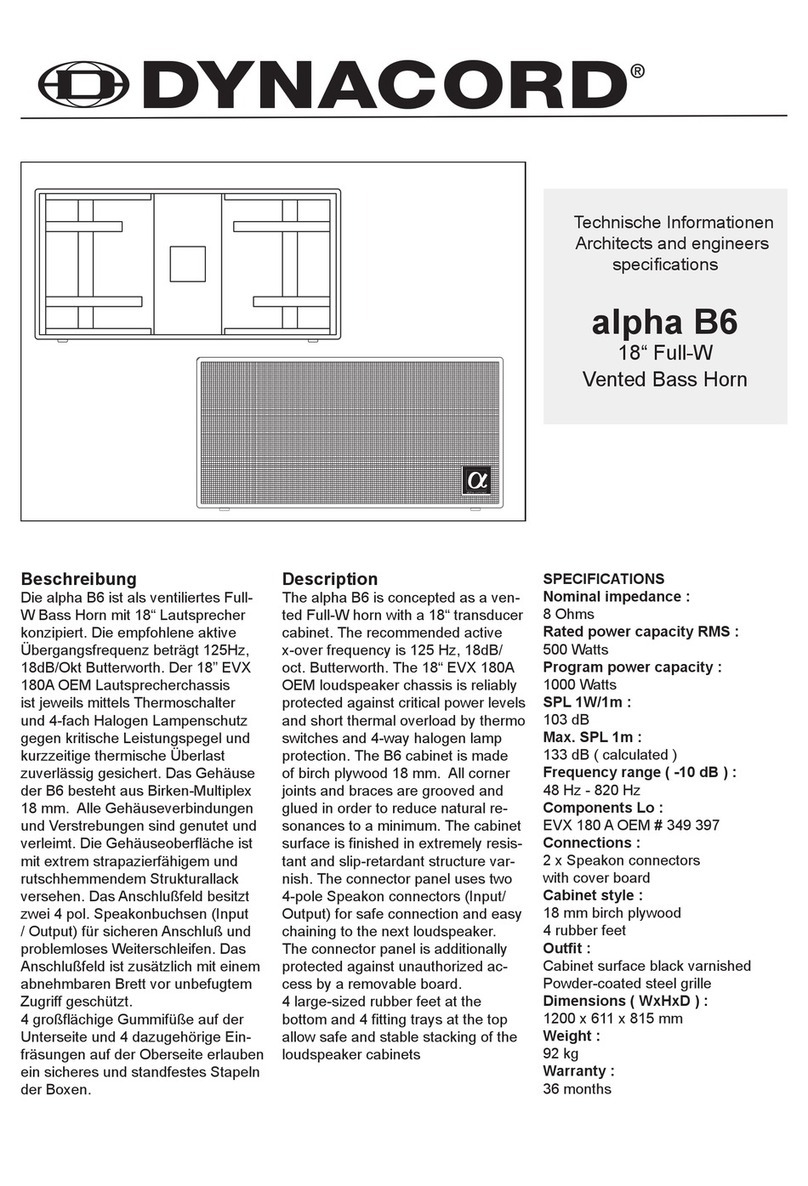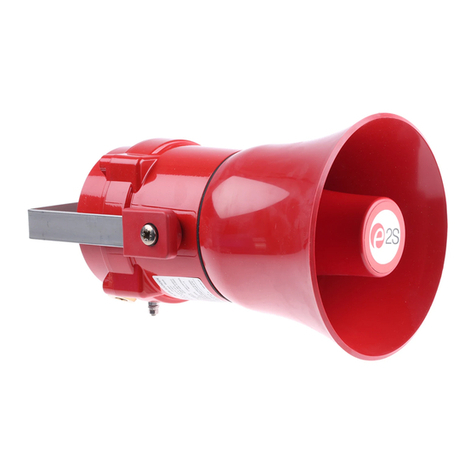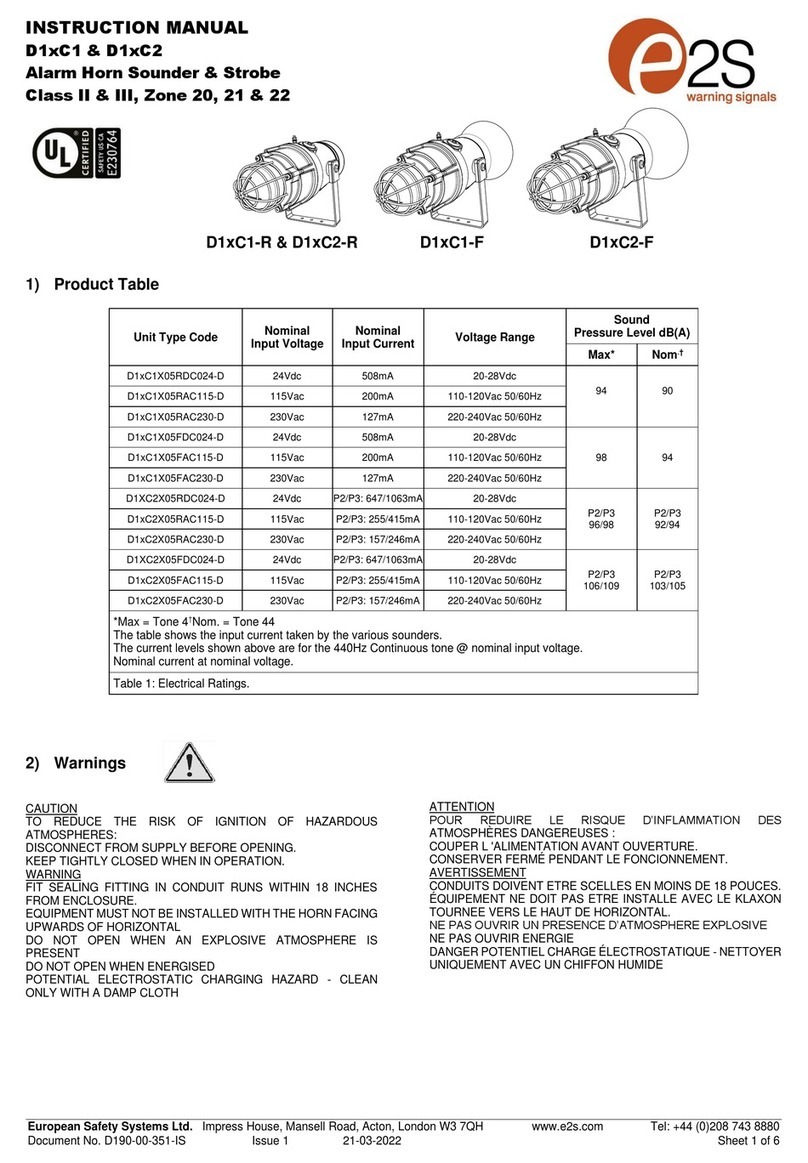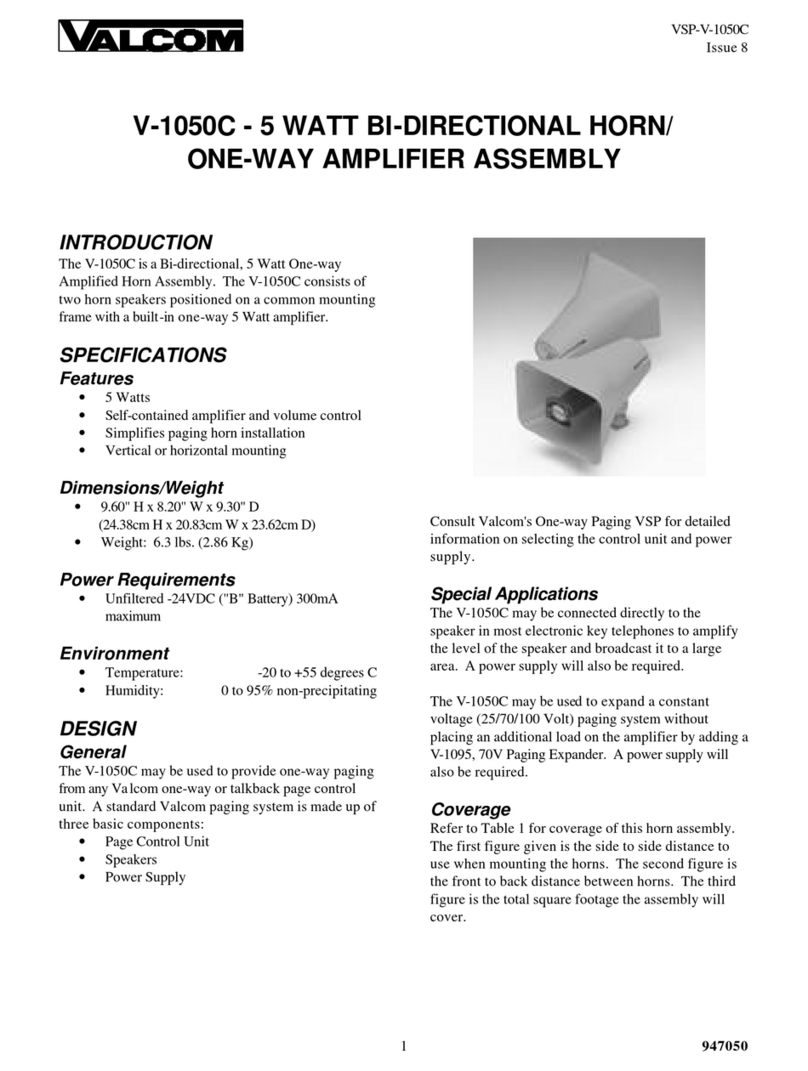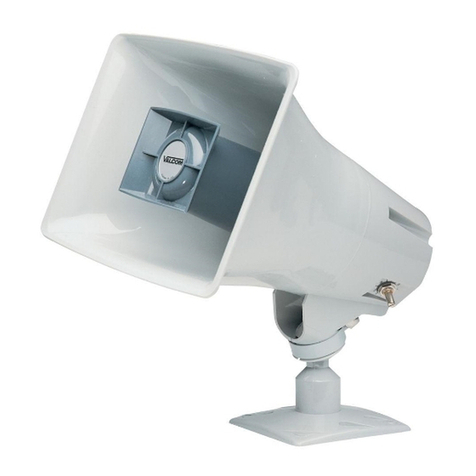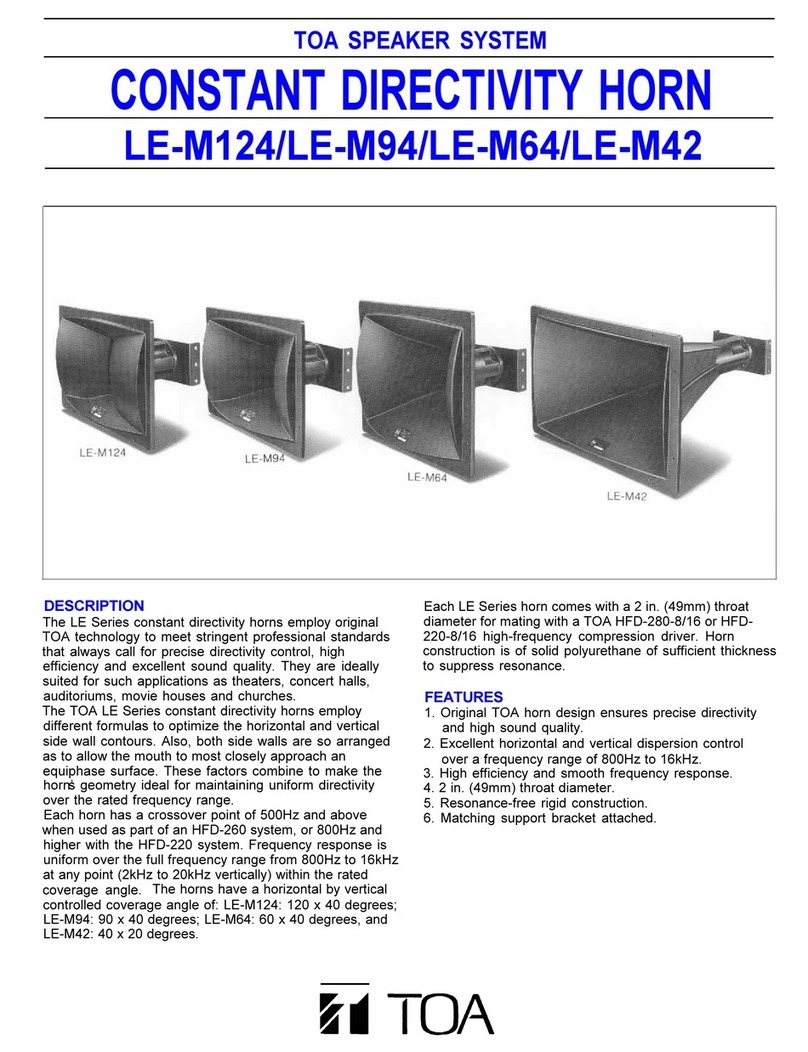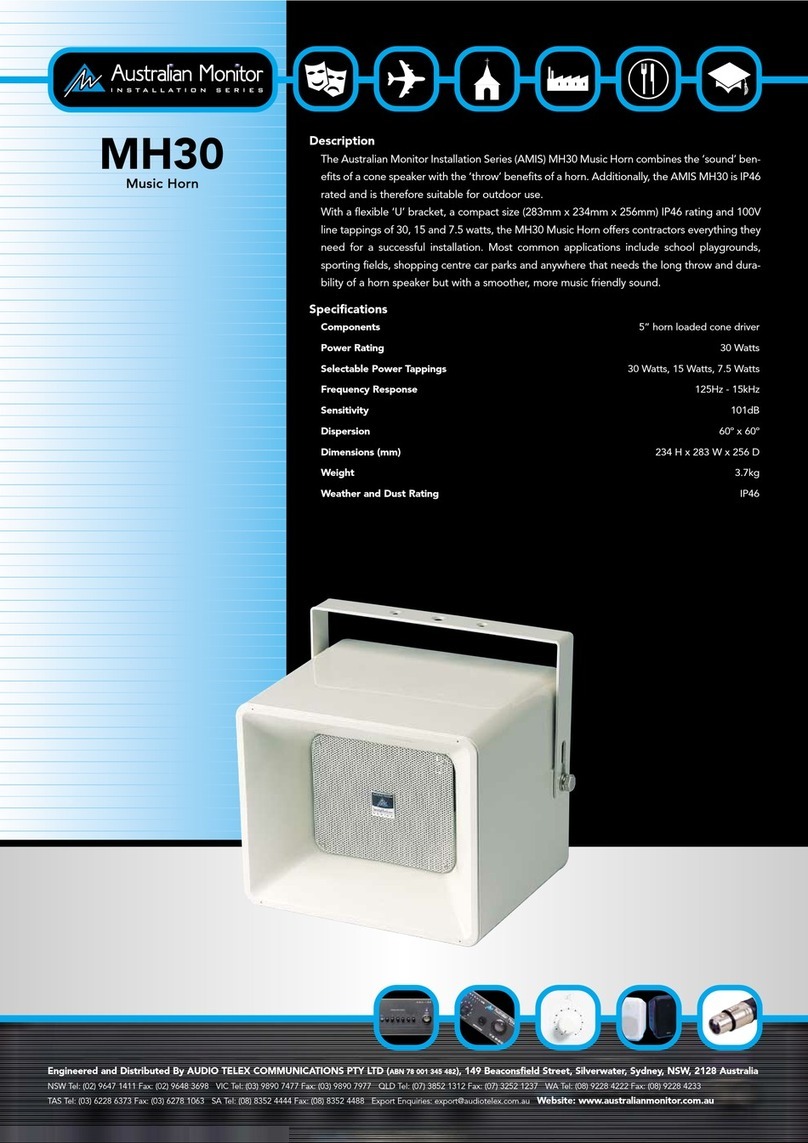
European Safety Systems Ltd.
Impress House, Mansell Road, Acton, London W3 7QH
Document No. D211-00-601-IS
Issue 1
20-08-22
Sheet 3 of 8
D2xB1:
X05DC048
X05AC115
X05AC230
Ex ec IIC T3 Gc X Ta -40°C to +50°C
Ex tc IIIC T95°C Dc X Ta -40°C to +50°C
D2xB1:
X10DC048
X10AC115
X10AC230
Ex ec IIC T2 Gc X Ta -40°C to +50°C
Ex tc IIIC T95°C Dc X Ta -40°C to +50°C
Installation must be carried out in compliance with the Canadian
Electric Code
4) Zones, Gas / Dust Groups and
Temperature Classification
Zone 2
Explosive gas air mixture not likely to occur in
normal operation, and if it does, it will only
exist for a short time.
Zone 22
Explosive dust air mixture not likely to occur
in normal operation, and if it does, it will only
exist for a short time.
Group IIA Propane
Group IIB Ethylene
Group IIC Hydrogen and Acetylene
Classification for Gas Applications
T1 450ºC
T2 300ºC
T3 200ºC
(D2xC2X05 only)
Dust Groupings
Group IIIA Combustible Flyings
Group IIIB Non-conductive Dust
Group IIIC Conductive Dust
Maximum Surface Temperature for Dust Applications
D2xC2X05DC024 75°C
D2xC2X10DC024 85ºC
D2xC2:
48Vdc, 115Vac
and 230Vac units
95ºC
3G / 3D
Equipment Level Protection
Gc, Dc
Ambient Temperature Range
-40°C to +50°C
IP66 to EN60529
To maintain the ingress protection rating, the two off cable entries
must be fitted with suitably rated, certified cable entry and/or
blanking devices during installation.
Per UL50E / NEMA250: 4 / 4X / 3R / 13
Installation must be carried out in compliance with the latest
issue of the following standards:
EN60079-14 / IEC60079-14: Explosive atmospheres - Electrical
installations design, selection and erection
EN60079-10-1 / IEC60079-10-1: Explosive atmospheres -
Classification of areas. Explosive gas atmospheres
EN60079-10-2 / IEC60079-10-2: Explosive atmospheres –
Classification of areas. Explosive dust atmospheres
5) Special Conditions for Safe Use
Special Condition for safe Use as stated on the Type
Examination Certificate DEMKO 14 ATEX 4786493904X / CoC
IECEx ULD 14.0004X / UL21UKEX2131X:
When used for a Group III application, the surface of the
enclosure may store electrostatic charge and become a source
of ignition in applications with a low relative humidity <~30%
relative humidity where the surface is relatively free of surface
contamination such as dirt, dust, or oil.
Guidance on protection against the risk of ignition due to
electrostatic discharge can be found in EN TR50404 and IEC
TR60079-32.
End user shall adhere to the manufacturer’s installation and
instruction when performing housekeeping to avoid the potential
for hazardous electrostatic charges during cleaning, by using a
damp cloth.
To maintain the ingress protection rating and mode of
protection, the cable entries must be fitted with suitably rated,
certified cable entry and/or blanking devices during installation.
6) Product Mounting and Access
6.1. Location and Mounting
The location of the combined alarm horn and beacon should be
made with due regard to the area over which the warning signal
must be visible and audible. It should only be fixed to services
that can carry the weight of the unit.
DxC2 Alarm Horn and Strobe to a flat surface via the two 9.7 x
6.7mm, 147mm pitch fixing holes in the mounting feet of the
sounder section and the two 7mm fixing holes in the feet of the
base.
The equipment is not to be mounted with the horn facing
upwards.

